Of Quietude, Wandering and Resolution: Achal Mishra’s Dhuin
Situated in Darbhanga in Bihar, Achal Mishra’s Dhuin (2022) follows the travails of Pankaj, a struggling theatre actor. Set against the backdrop of the national Covid-19 lockdown and the helplessness that followed, the film stitches together scenes from the life of a young man trying to make ends meet. It depicts, in Mishra’s characteristic poesy, the humility and frustration of indecision arising from having to choose between individual dreams and familial obligations. While his grumbling father wishes for him to work and bring home money, Pankaj is surrounded by the wishfulness of his own dreams. In its 50-minute run-time, Dhuin unfolds like a novella—a story of growth and crisis with characters moving gently through various choreographies, dusting themselves off, wanting more, dreaming bigger and desiring better.
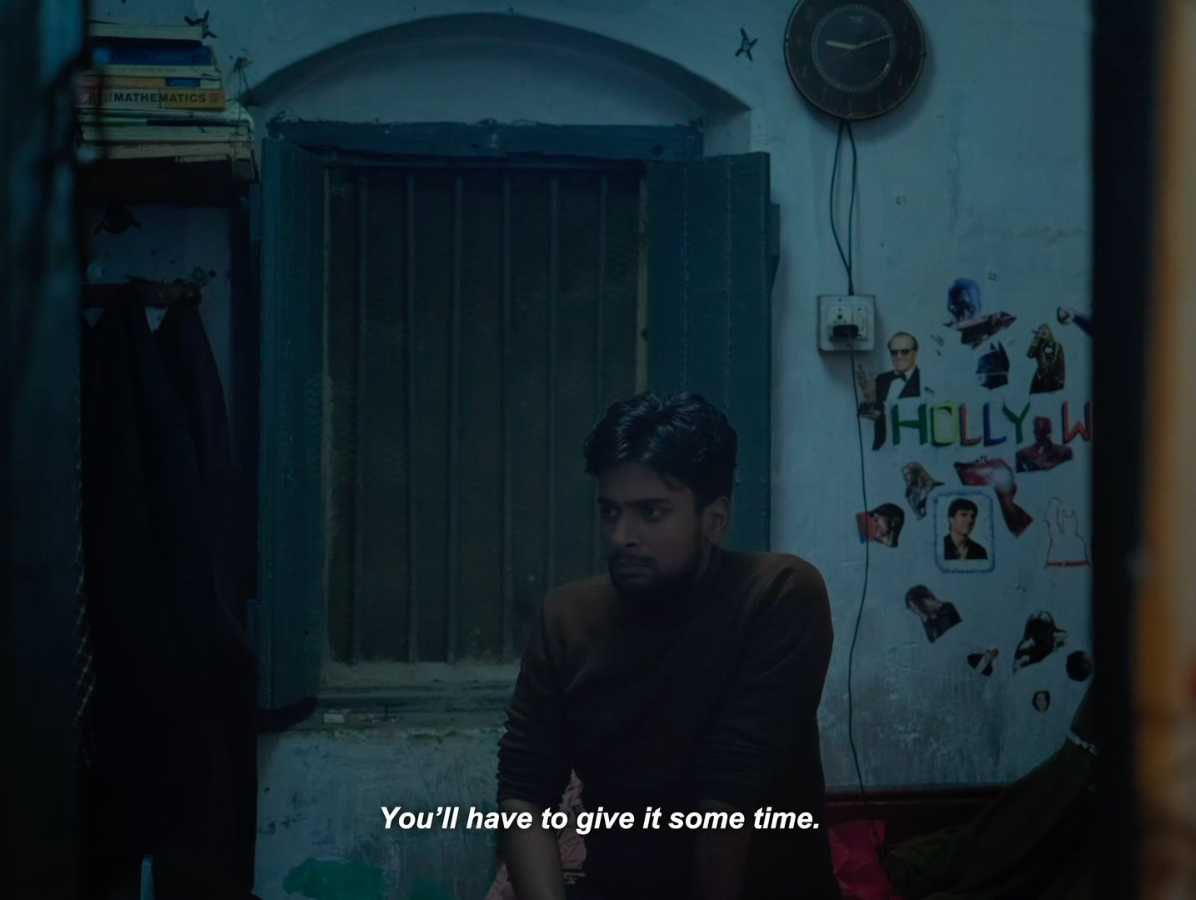
Pankaj watches a tutorial on how to cry as an actor, where the instructor advises his viewers to “give it some time.”
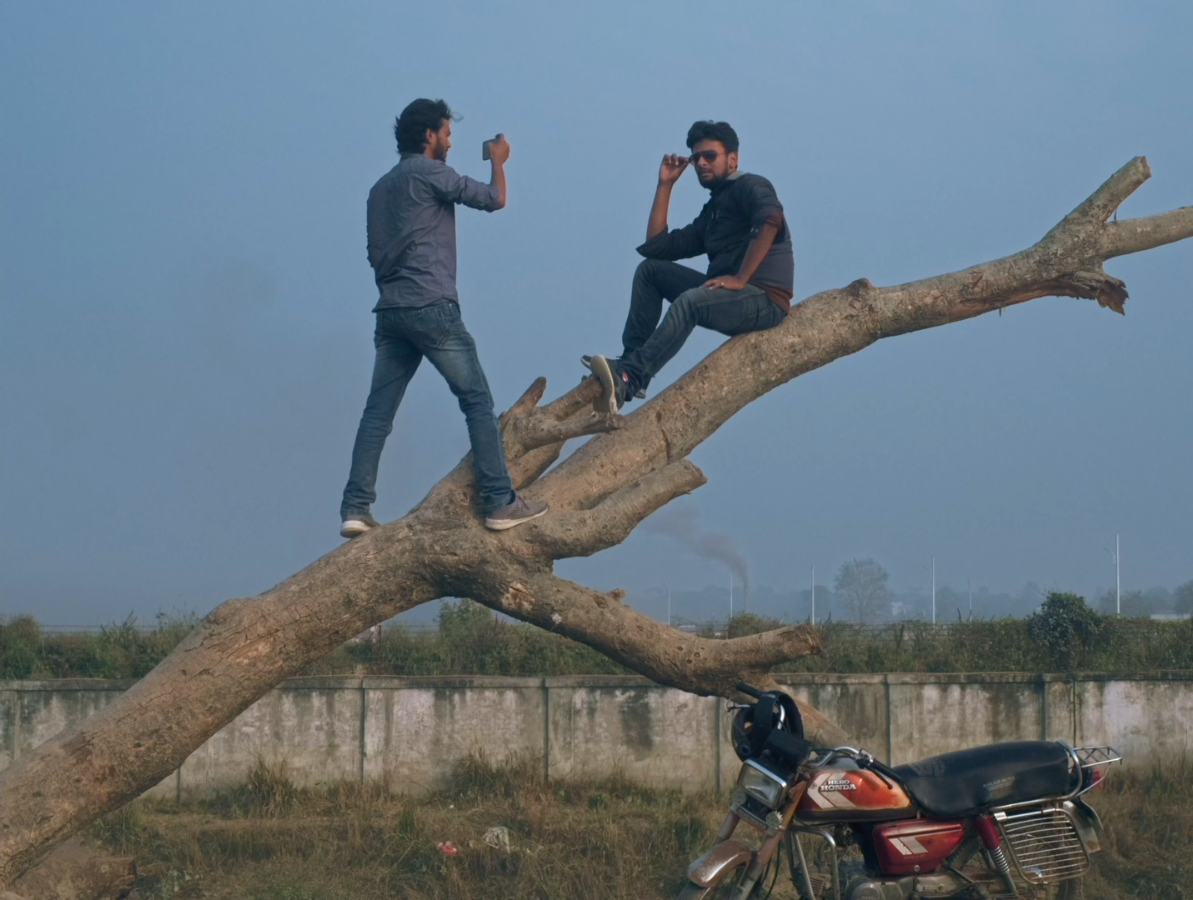
Pankaj and his friend climb a dead tree near the airport to take photographs, posing as a film star.
In an interview with Scroll, Mishra says he was inspired by an incident narrated by one of the actors from his previous film, Gamak Ghar (2019), who spoke of accompanying his retired father to a job interview. Immediately struck by the image of father and son on a bike in winter, Mishra developed Dhuin as a five-page script. Both of Mishra’s films have a deeply photographic nature to them, plausibly stemming from his own practice as a photographer. This becomes even more evident in the manner in which certain frames unfold in the film. Pankaj walks incessantly, untiringly, sometimes into the fog, often in solitude. Walking is not simply a cinematic transition for the filmmaker and his actors, it is also a momentous action. Each scene with Pankaj walking marks a change of gears for the protagonist, a realisation dawning ever so slowly that one can almost hear the wheels turn in his head and his heart. Interestingly, his walking also serves another purpose. In the interview with Scroll, Mishra also talks about drawing from the films of Nuri Bilge Ceylan and Mia Hansen-Løve to film Darbhanga’s cityscape, with its undulations and layered histories. The city is never weaponised and neither is it a prop. Instead, the director uses the landscape to situate his ongoing exploration of how one reads a city and its pulse, paralleling the protagonist’s own journey of self-exploration.

Pankaj walks.
Upper L - R: After an argument with his father, Pankaj storms out of the house, walking furiously. He slows down as he leaves the compound of his house, and we see him eventually get onto his friend’s bike, leaving to meet other actors.
Lower L - R: On a slow walk home, the camera follows a pensive Pankaj on a sidewalk. After a particularly condescending conversation with his peers, Pankaj walks through a cloud of fog. Visibly distressed, we then see him back home, breathing heavily into a pillow.
Mishra situates the motif of the threshold in an endearingly poetic manner in Dhuin. At the start of the film, Pankaj’s father is seated in his small courtyard, reassessing certain decisions, lit by the flickering warmth of a fire and accompanied by the firm, unwavering voice of a well-wisher. Towards the end of the film, after it is revealed that Pankaj does indeed assist his father with his trip to Muzaffarnagar, night turns to day and we see the camera pause on a billowing white curtain hanging at the doorway to the house. Silence is an interruption; a train chugs furiously, one can see its now-familiar form passing by through the curtain. With Dhuin, one sees Mishra incorporate the threshold as a passageway, offering his characters a metaphorical route through and back into familiarity, coating the uncertainty underlying everything with a sense of calm reassurance. As things dangle in the balance with the decision that Pankaj must make, the film uses its slow-burn cinematic direction to demonstrate the pensive turn of time, with the threshold occupying an equally uncertain texture as the future of its inhabitants.
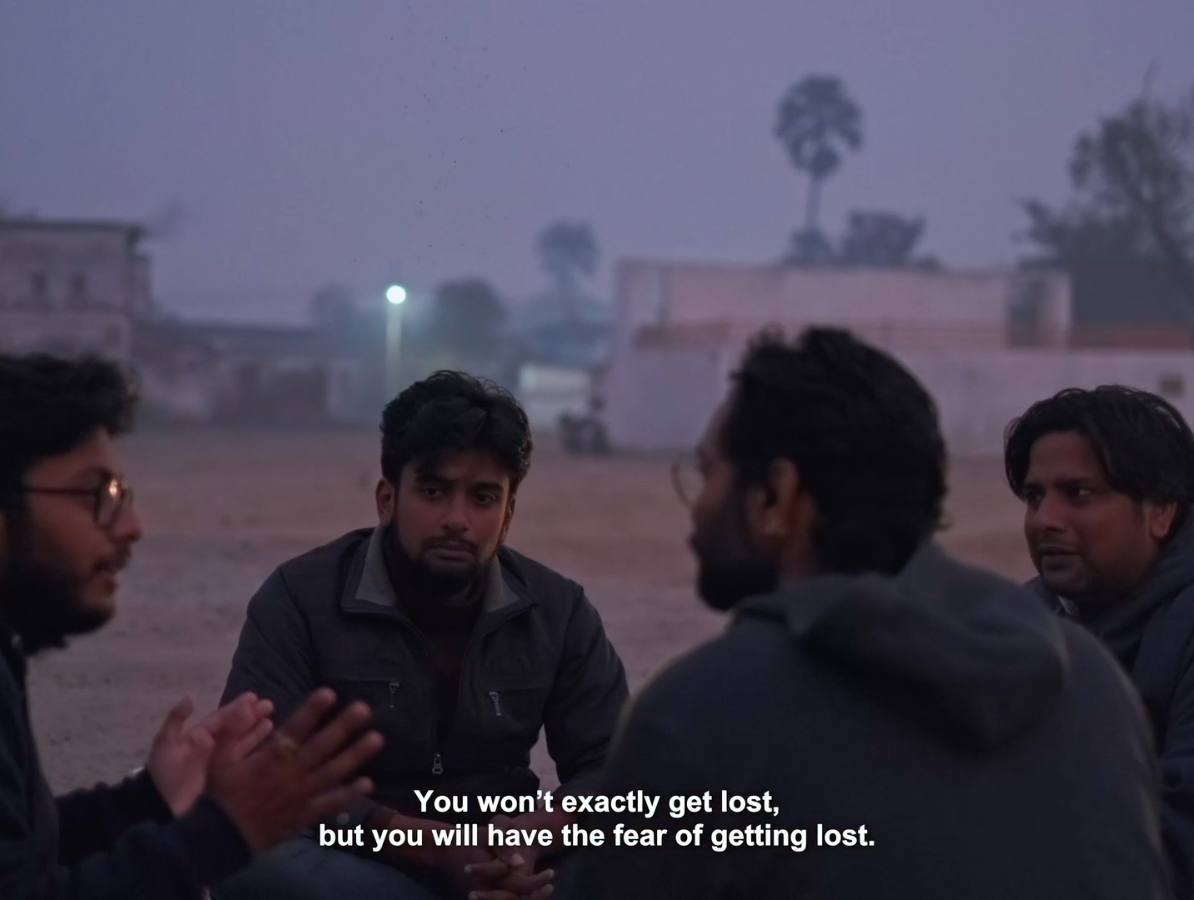
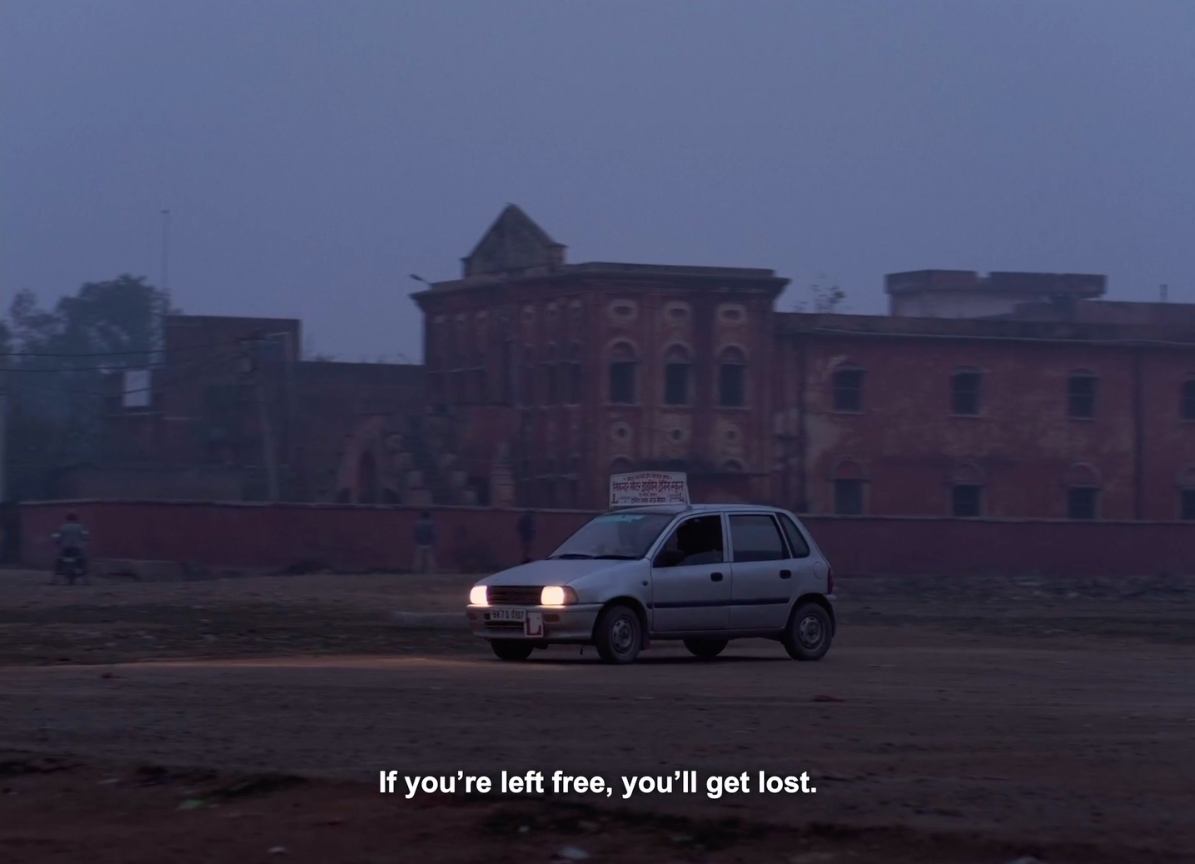
A snippet from the conversation Pankaj has with two filmmakers and a Mumbai-returned actor who taunt him for his wish to move to Mumbai, leaving him very frustrated and embarrassed.
Dhuin is a film that does not attempt at conclusiveness. Instead, it pauses to consider the moments before a decision. It formulates a narrative of the chaos that precedes decisiveness, brimming with insecurity and meandering. The latter appears necessary for its protagonist, who grimaces at the thought of having to stay back in his hometown. Pankaj broods under trees and awnings, in public grounds and tea stalls, all while trying very hard to arrive at something—a dream, a decision, a direction.
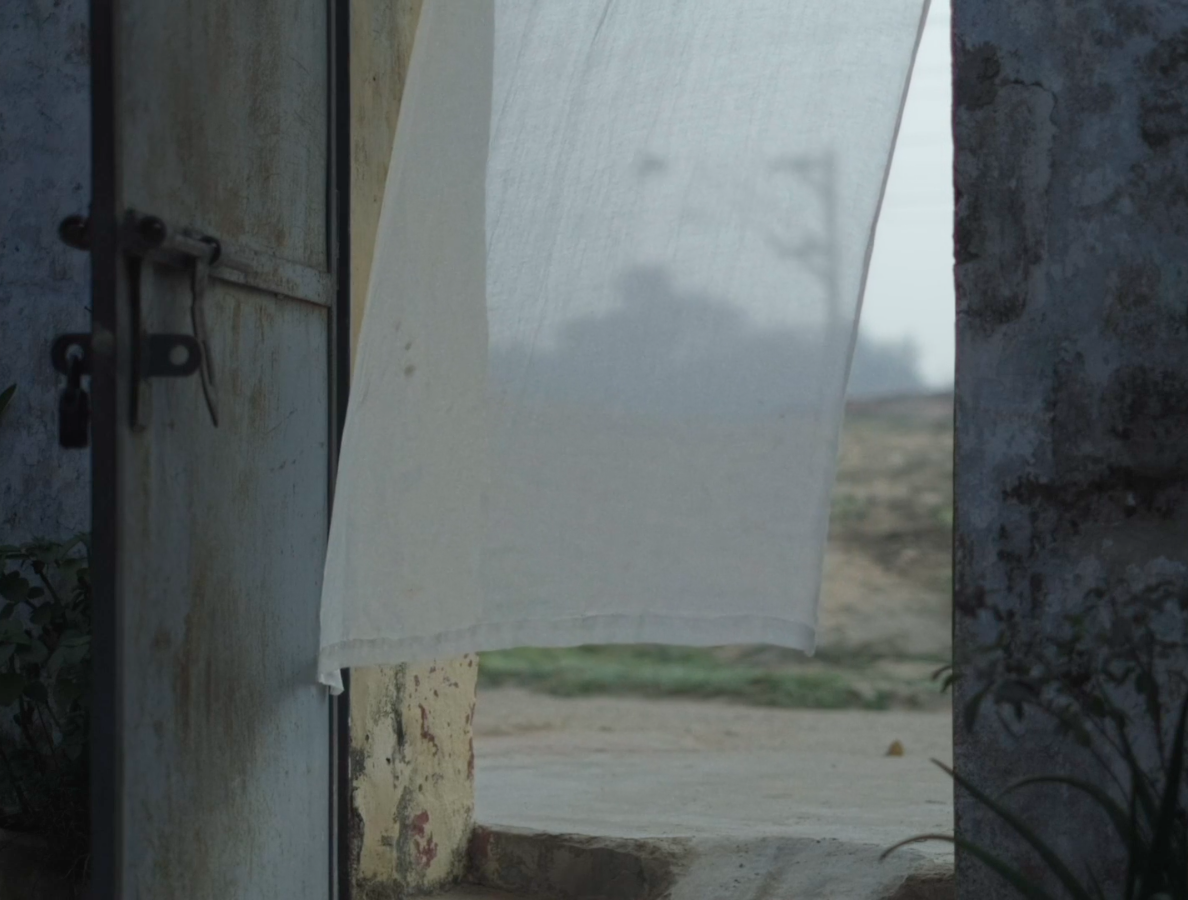
The threshold is a poignant symbol of change in Mishra’s filmmaking.
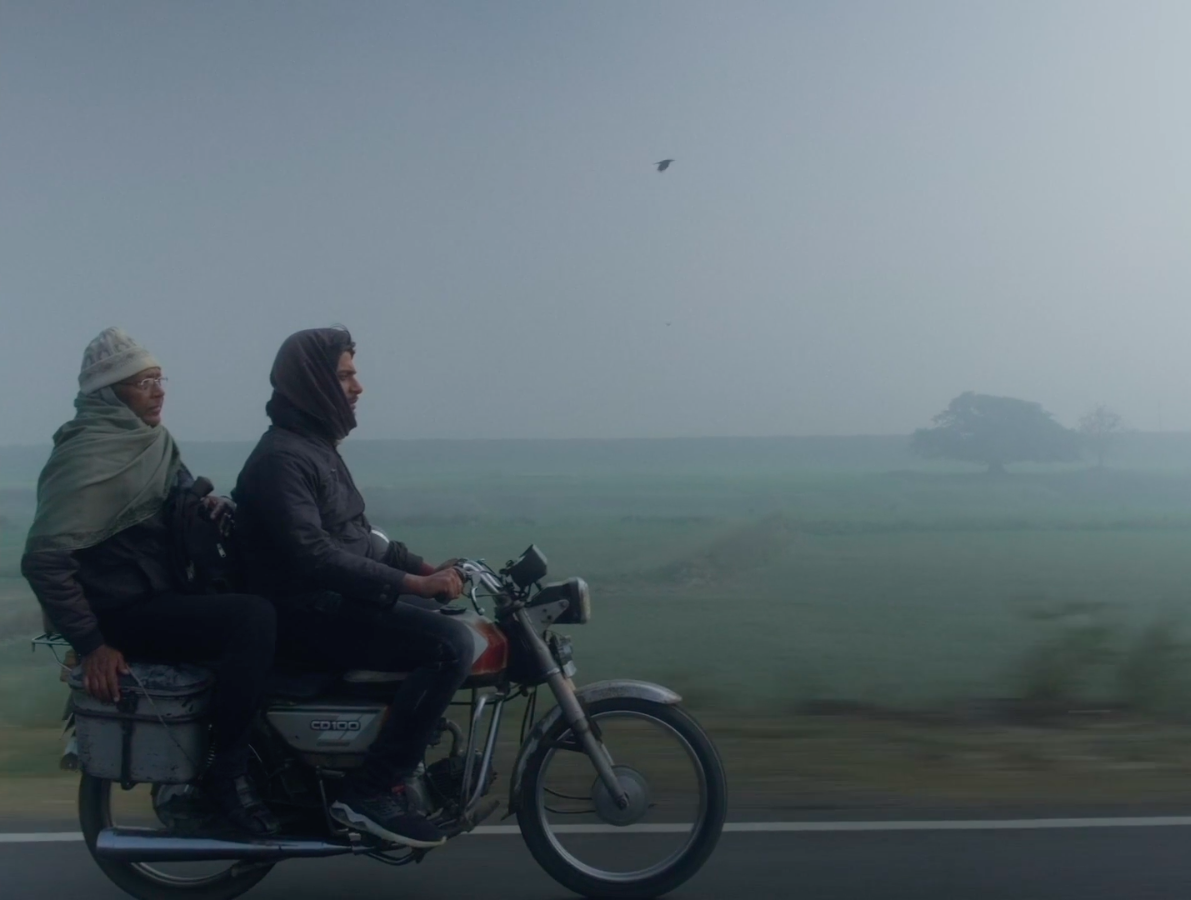
Father and son riding a bike to Muzaffarnagar, swathed in woolens and silence. The fog seems to have begun to clear in the background.
In one of the film’s pivotal scenes, we see Pankaj seated on the sandy ground of a maidan (field) with a Mumbai-returned actor and two filmmakers. As the older, more experienced men launch into a conversation about Abbas Kiarostami and his films, Pankaj is flummoxed by their name-dropping and unconcealed condescension. As they speak, and as Pankaj glowers, a car drives in circles again and again in the background. Its flaring light fills their faces with strange illumination. The camera alternates between the two, following the vehicle’s stilted route and their similarly stilted conversation. Particularly remarkable in this scene is the manner in which Mishra crafts Pankaj’s rootlessness and confusion, which coupled with his deep urgency to move onward and upward, makes this scene truly unforgettable. As Pankaj walks, the film continues to fan out the struggle of wanting to speak, wanting to learn and be listened to, tenderly outlining the exigency of coming into one’s own. Dhuin means mist or fog in Maithili, and the density of fog is often measured through the amount of visibility one is afforded in the moment—how much will you see, how far will you go? As Pankaj’s desire to grow festers with resentment and wistfulness, we find ourselves resonating with his longing to be elsewhere. This is the affect that Dhuin engenders, founded on the way in which it maps the unforeseen nature of certain roads of life and the inexplicability of the decisions we take along the way.
To read more about the films screening at the 2022 edition of the Dharamshala International Film Festival, please click here, here, here, here, here and here.
All images from Dhuin (2022) by Achal Mishra. Images courtesy of the director and the Dharamshala International Film Festival.




